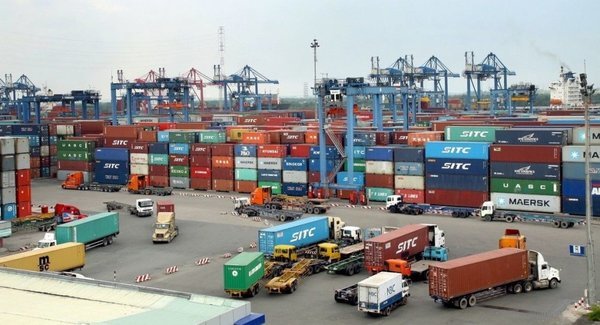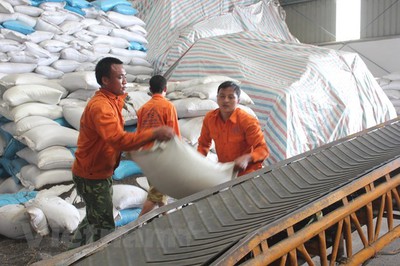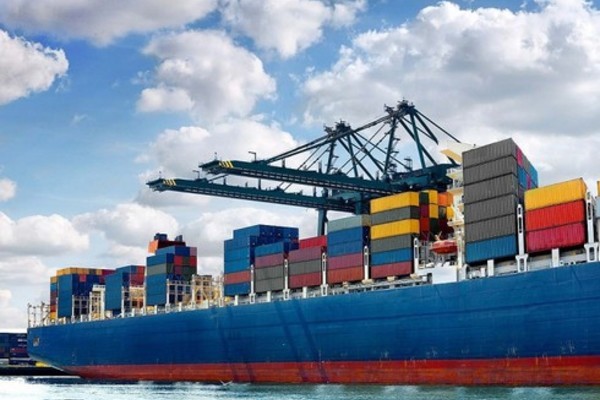 |
|
Although her economic targets approved over the past three years set a trade deficit, Vietnam enjoyed a trade surplus during that period
|
In addition, the country’s inflation control is also impressive. They are all positive signs. However, accurate forecasts are essential. What is the real cause of the discrepancy? The truth lies with the price level on the global market.
Although her economic targets approved over the past three years set trade deficit at between 3% and 5.5% of the total foreign trade value, Vietnam enjoyed a trade surplus of almost US$1.8 billion in 2016, US$2.1 billion in 2017 and US$6.8 billion in 2018, a record high equivalent to some 2.7% of the nation’s total foreign trade value.
This year’s target is still set consistent with that of 2018, meaning a trade deficit of 3.5%. However, in fact, Vietnam reached a new high of trade surplus at US$7.15 billion in the first nine months.
Viewed from statistics, it can be said that the reality comes from price fluctuations on the world market. Yet this factor has been largely ignored or really underestimated in the planning process in the context that Vietnam’s basket of imports and exports have changed.
First, we should take into account statistics by the World Bank which indicate that since 2011, global commodity prices have almost declined ceaselessly or tended to fall.
If 2010 is made the base year, global energy price reached its peak in 2011 at 128.7%. Prices of non-energy commodities also reached the climax then at 119.6%.
However, these figures dropped to 87% and 85.2%, respectively, in 2018, and 76.6% and 81.6% in the first nine months of this year.
In Vietnam, according to computation relying on statistics released by customs agencies, the total sales of all export commodities recorded in both quantity and value (including 16 items which are materials, fuel and agricultural products) amounted to over US$29.9 billion in 2012.
However, if they were calculated using the 2011 price level, they would be more than US$32.6 billion. That means Vietnam would lose US$2.7 billion, about 9%, when it comes to prices. The trend has continued ever since, and the three corresponding figures are US$29.8 billion, US$10.4 billion and 34.8% in 2018; and US$21.4 billion, US$10.4 billion and 48.6% in the first nine months of 2019.
What this means is contrary to the sharp rise during a long time of the previous phase, although the export volume of these commodities have decelerated, it has been in sync with the highly negative effect of world prices and thus has not increased at all.
In other words, Vietnam’s export growth rate has “shrunk” dramatically while losses in prices incurred to Vietnam have become ever greater.
However, the opposite is true for import.
First, statistics show that the total import value of the 17 commodities (also materials, fuel and agricultural products) whose quantity and value are recorded was almost US$33.8 billion in 2012. However, if it was calculated in accordance with the 2011 price level, it would rise to US$35.5 billion. To put it differently, Vietnam enjoyed a price advantage of US$1.7 billion, about 5%.
This trend has not only continued but also significantly reinforced ever since. Consequently, the three corresponding figures are US$56.7 billion, US$15.1 billion and 28.5% in 2018; and US$45.1 billion, US$16.1 billion and 37.3% in the first nine months of 2019.
In reality, Vietnam’s export of those commodities has sustained the remarkable rise in the long preceding phase.
However, the global plunging prices have overshadowed that increase. Falling prices have not only partly concealed the import growth rate but also magnified the price benefit gained by Vietnam.
In such a backdrop of import, as far as the economy is concerned in general, Vietnam has reversed a situation in which her price benefit failed to offset losses in export in 2012 to achieve one where considerable net profit has been reaped since then.
Results from the computation making use of statistics show that while price benefit reaped from import was almost US$1 billion smaller than the loss in export in 2012, Vietnam gained a net profit of nearly US$200 million in 2013, a record high of US$14.7 billion in 2016, almost US$6 billion in 2018, and US$5.8 billion in the first nine months of this year.
Needless to say, when import “shrinks” at a pace that is considerably higher than export, in addition to the export of manufactured industrial products which have improved considerably and played a more crucial role, price fluctuations on the global market are an important factor which has turned the tables, replacing trade deficit with trade surplus.
What’s more, in an economy which is still modest when it comes to development, but has great openness, plummeting world commodity prices during a long time have exerted a remarkable cooling effect on the domestic market.
Have a look at local food prices and you’ll see why. That the food prices have for decades gone hand in hand with the price of rice export is a credible testimony to this argument.
That also means the global market has played an important role in Vietnam’s successful inflation control.
In sum, it is impossible to deny that Vietnam’s amazing achievements rest on subjective factors. Yet it is unfair to disregard objective elements.
As a result, paying due attention to objective factors when building plans will definitely make them more feasible. SGT
Nguyen Dinh Bich

Vietnam’s exports subject to 154 trade probes in 9 months
The 154 trade probes against Vietnamese goods are initiated in 19 countries and territories, including the US with 30 cases, Turkey with 21, India with 20 and the EU with 14, among others.

Vietnam’s trade turnover exceeds $400 billion
Vietnam’s total import-export turnover has surpassed 400 billion USD, according to the General Department of Customs.

Vietnam enjoys growing trade surplus of over US$6.8 billion
Vietnam recorded a trade surplus of over US$6.8 billion between the beginning of the year and October 15 with total import-export turnover reaching over US$403 billion, according to statistics released by the General Department of Vietnam Customs.
 In its annual plans in recent years, the Government has always anticipated trade deficit. In reality, Vietnam has always run a trade surplus.
In its annual plans in recent years, the Government has always anticipated trade deficit. In reality, Vietnam has always run a trade surplus.